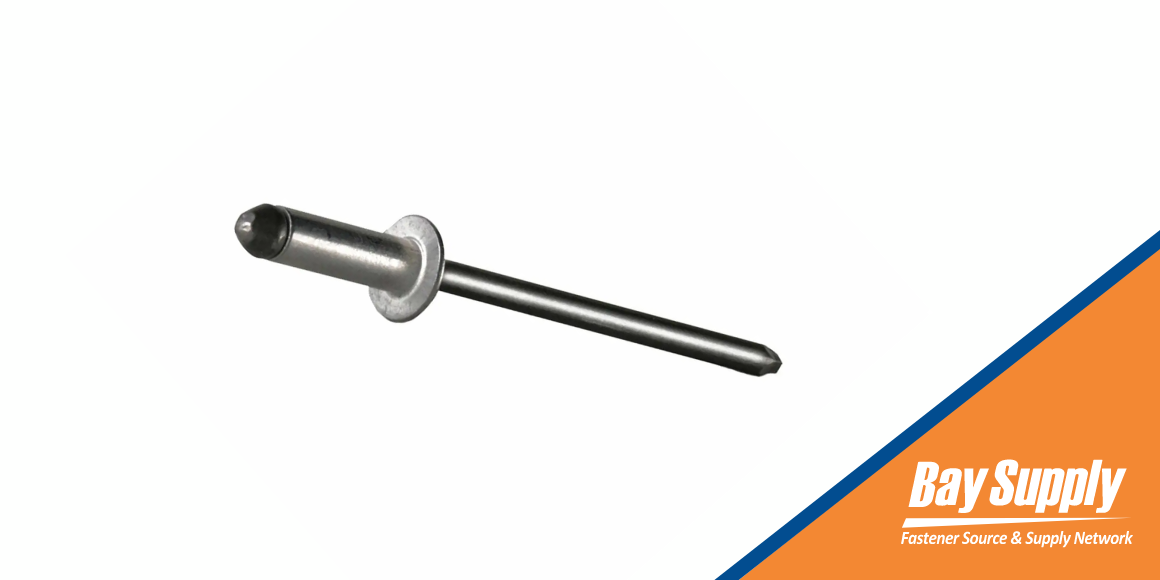
Rivets have been used to build boats, make tools, construct buildings, and for other applications nearly as far back as we have recorded history. However, the construction of the rivets and their applications continues to evolve.Rivets were created to bind things together, and all rivets have the same basic configuration. A shaft extends through holes in the materials that need to be fastened. The shaft has a head at one end so it won’t pull through the hole, and the other end collapses to form a strong joint.
Rivets continue to be popular for various applications because they are stronger and last longer than screws or nuts and bolts. They also provide a waterproof joint, which makes them ideal for applications such as making containers for liquids or building boats.
Soft set rivets evolved to address specific fastener challenges, such as providing a secure seal for softer materials. Soft set rivets are common today because they are reliable, easy to set, and designed to last.
The Evolution of Riveting Techniques
To fix a rivet in place, one end of the rivet must be soft enough to collapse against the fastened material yet strong enough to form a lasting bond. Soft rivets made of different materials have been used for various applications over time.
The ancient Egyptians used clay rivets to fix the handles of clay jars. The soft clay would dry to become hard and form a lasting, waterproof joint. During the Bronze Age, the Romans and Vikings used rivets to fashion weapons.
Modern rivets started to come into use in the mid-19th century when hot rivets were hammered into place to form a strong bond when they cooled. Modern riveting techniques began with applications such as making boilers and ships since rivets proved stronger and more lasting than welds.
Today, cold rivets have become commonplace. Rivets are often made of softer metals, such as iron, steel, and aluminum, that work because they can be flattened on one side to form a strong bond. Some metals, such as cast iron, are too inflexible and even too brittle to be useful as rivet materials.
Innovations in Riveting
Soft rivets come in two basic types: cold rivets and hot rivets.
- Hot rivets are used for larger rivet applications, such as building bridges or skyscrapers. The rivets are heated before they are inserted into the joint, so the metal becomes softer and easier to flatten.
- Cold rivets are used for smaller rivet applications, such as manufacturing, aircraft assembly, and consumer electronics. The rivet material is soft enough that it can collapse to form a seal without heating the rivet.
Installers often use a bucking bar and a hammer or pneumatic rivet tool to install solid rivets. The installer holds the bucking bar on the opposite side of the rivet from the rivet head. When the installer strikes the rivet head using a hammer or riveter, the rivet collapses against the bucking bar, thus forming the joint. Bucking bars can be used with both cold and hot solid rivets.
Solid rivets require access to both sides of the material to form the joint. Sometimes, such as in assembling aircraft or automobiles, it isn’t possible to access both sides. In those instances, blind rivets often work best.
Blind rivets are also cold rivets, but rather than solid, the rivet is a hollow tube with a mandrel designed to be installed from one side of the materials. The installer inserts the rivet into the hole to connect the materials, and when the installer pulls the mandrel, it pulls and collapses the rivet on the opposite or blind side. Blind rivets are cold rivets that use metals that are soft enough to collapse and form a joint when an installer pulls the mandrel.
Soft set rivets are made from malleable metals such as brass, nickel, copper-nickel, steel, and aluminum, so they collapse to form a lasting joint without crushing the material. For example, installers can use soft set blind rivets to connect plastic circuit boards that need to be securely fastened without crushing the circuit board substrate.
Applications for Soft Set Rivets
Soft set rivets have proven their value in many ways. For example, soft set blind rivets are ideal for aircraft manufacturing. They are lightweight, easy to install, provide a consistent joint, and are highly reliable.
Charles Ward Hall of Hall Aluminum Aircraft Corporation developed soft set rivets for airplane manufacturing. He submitted a patent proposal for a flush rivet in 1928 and created the first riveted aircraft fuselage in 1929.
Carl Cherry of Cherry Aerospace patented his blind soft set rivet design in 1939. The first Cherry blind rivets were made of aluminum with a steel mandrel. The same materials and design are still used for pop rivets, which are among the most popular blind rivets on the market.
Today, soft set rivets, especially blind rivets, are used everywhere, including in assembly line manufacturing and in boats, cars, trains, and other forms of transportation. Soft set rivets are also used in heavy-duty applications such as mining equipment, railcars, and agriculture equipment because they are easy to install and durable. They also are used in home appliances, HVAC systems, electronics, lighting, and similar uses that need reliable performance.
Soft set rivets will continue to find new applications in the future. They are used for solar installations and will be increasingly used in electric vehicles and alternative energy systems. New manufacturing processes will use soft set rivets, especially with the increased use of plastics and the need to join different materials.
No matter the application, you can find the right soft set rivets on the Bay Supply Marketplace. Bay Supply offers a full range of fasteners from manufacturers and distributors worldwide.



Comments